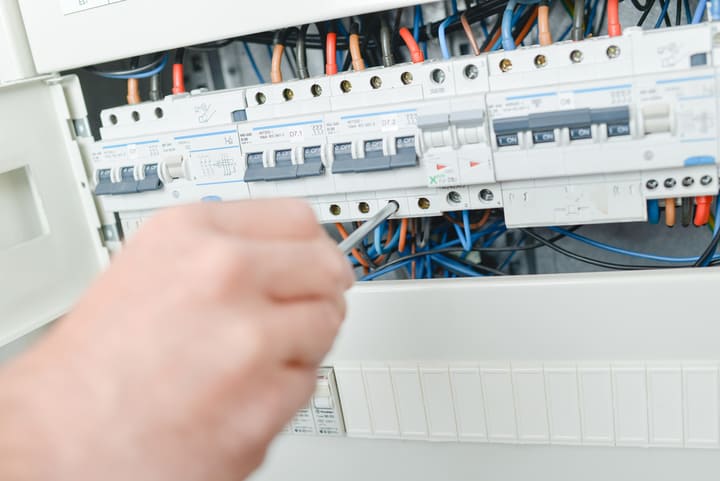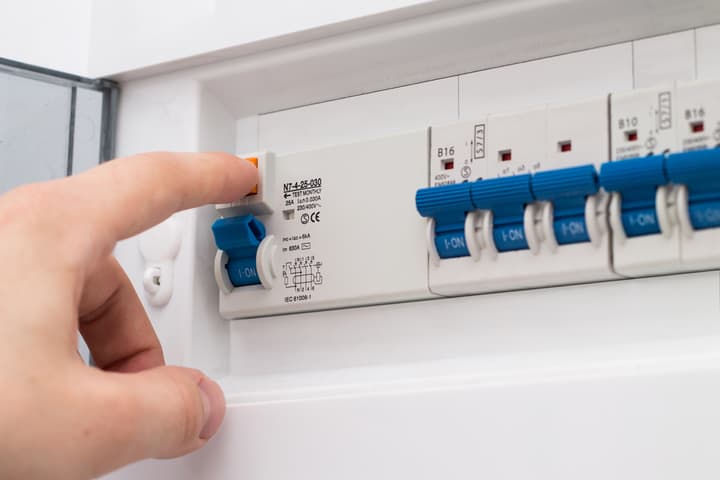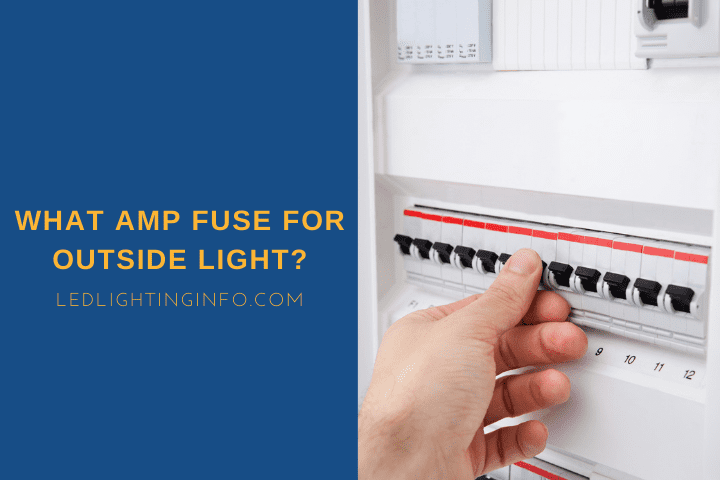Fuses are some of the most important safety devices in your home.
These little marvels are what keep your electrical current in check by limiting the power if there’s an overload, sacrificing themselves to protect the rest of your electrics, and preventing severe hazards.
You must get the correct fuse for the circuit. Install one that’s rated too low, and you won’t be able to install as many devices on the circuit before you overload it, meaning it’ll keep blowing.
Install one that’s rated too high, and it won’t protect the appliances on the circuit from a higher current.
For outdoor lighting, the best-rated fuse is normally 5 amps. This is sufficient to let you install many lights without being rated so high that it causes your wires and lights to become dangerous.
Let’s look a little more at:
- Why 5 amps is considered the outdoor lighting sweet spot
- Whether you’ll be able to use a 3 amp fuse
- How many Watts a 5 amp fuse can handle
What Is The Ideal Amp Fuse For Outdoor Lights?

The ideal fuse for any electrical circuit completely depends on the powered devices and how much load they place on the circuit.
A fuse works by acting as a circuit breaker. It prevents fire or damage to your appliances if the draw from the appliances becomes overwhelming, such as if there’s a fault or a surge.
The most common fuses you’ll find for home electrical circuits are 3A, 5A, 13A, 15A, or 20A.
You need to choose a fuse that will handle the Wattage of lights, but at the same time, don’t have too high a threshold.
You want something that will still pop and cut the power if the draw gets too high, so choosing a fuse that’s rated too high becomes more dangerous.
Outdoor lights, particularly if you choose LEDs, don’t tend to have a huge amount of Watts being drawn on a circuit.
That’s because outdoor lighting tends to have a lower lumen output to prevent it from causing light pollution.
String lights will usually be 1W per bulb if you’re using LEDs, while you can expect decking lights to be anything from 1 to 10 Watts on average.
So to ensure there’s enough capacity for your lights, 5 amps tend to be the fuse of choice, though make sure you do your own calculations.
Don’t go for a 13 amp fuse, as that’ll be way too high – your lights could become seriously damaged and set on fire if something goes wrong without the fuse exceeding its limits and cutting the power.
Can I Use 3 Amp Instead Of 5 Amp?

Technically, you might be able to use a 3 amp fuse for your outdoor lighting. However, a 3 amp fuse will definitely keep your home safe as it won’t tolerate a huge power draw before it cuts the power.
The counter to that is that it might also cut out when your lights are working normally, especially if you start to push the limits of the number of Watts that a 3 amp fuse can handle.
Choosing a 5 amp fuse is considered to be the best balance.
It’ll always ensure you have sufficient power for your lighting, and it won’t cut out too soon, but as soon as there’s enough of an issue to ramp up the power draw, it’ll still keep you safe.
How Many Watts Can A 5 Amp Fuse Handle?

The formula for calculating how many Watts a fuse can handle is relatively simple. You just need to take the number of amps in the fuse and multiply it by the voltage.
If you live in the US, the standard voltage from your main power source through your circuit board is 120v.
Around the world, that standard is different since they didn’t have the legacy 120v system to worry about, so many places around the world work with 220-240V.
In the US, that means that an outdoor lighting circuit with a 5 amp fuse can handle 5 x 120 = 600 Watts.
600 Watts is more than enough to adequately light your outdoor space, even if you’re still using older incandescent bulbs. However, most garden light fittings are now designed for LEDs or halogen bulbs.
LED bulbs generally have a very low wattage. For example, a standard lightbulb in a sealed wall light will likely be between 6 and 13W. A halogen equivalent will run a bit higher, likely up to 60W at most.
Other types of outdoor light will vary, but you can see that if you had a few halogen bulbs in a row, you’d definitely get close to exceeding the 360 Watts that you should put on a 3 amp fuse, which is why a 5 amp one is a much better option.
One other thing to note, and I touched on it earlier – light pollution. Just because you can have 600 Watts of lighting on your circuit doesn’t mean that’s a goal to aim for.
You need to think carefully about the positioning of your lights to avoid causing a nuisance to your neighbors.
If you don’t want to spend a lot of money installing a new lighting setup, only to be told you need to dismantle it or spend even more to divert the light away from other homes.
Final Words
Whether you’re planning a brand new outdoor lighting setup, or you just need to replace the fuse for your existing one. You’re wondering whether that spare fuse in the drawer is safe to use, make sure you install one that is right for your setup.
In the same way, you can calculate the Wattage from the amps. You can do the same in reverse.
Total up the Wattage of the bulbs you’re using, divide it by the voltage of your power source, and then make sure you buy a fuse that’s higher than the result without getting one that’s rated too much higher.
Any stories of your own with blown fuses? Or got any more questions about the lighting in your home?

